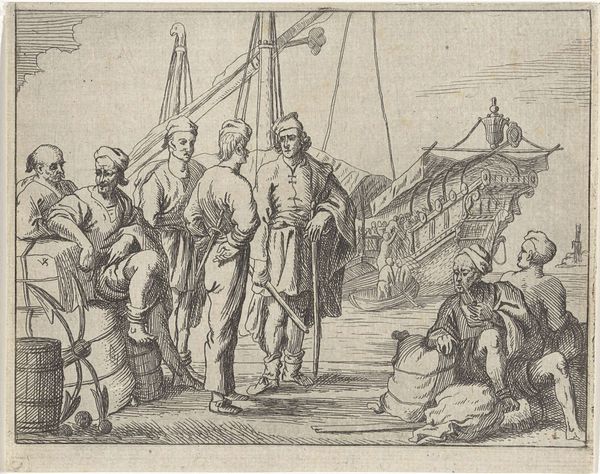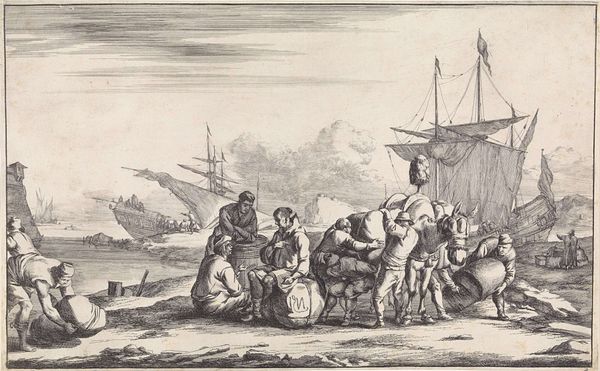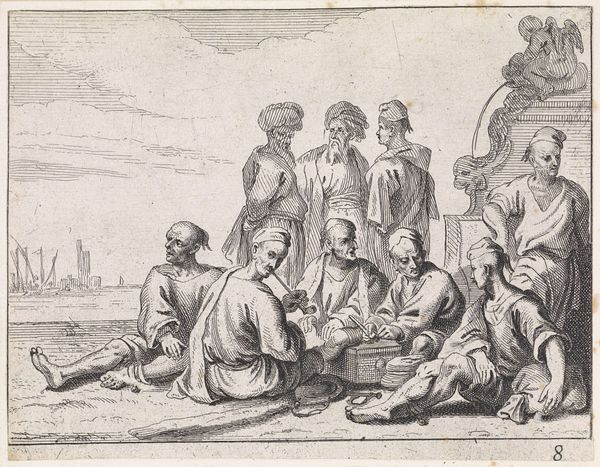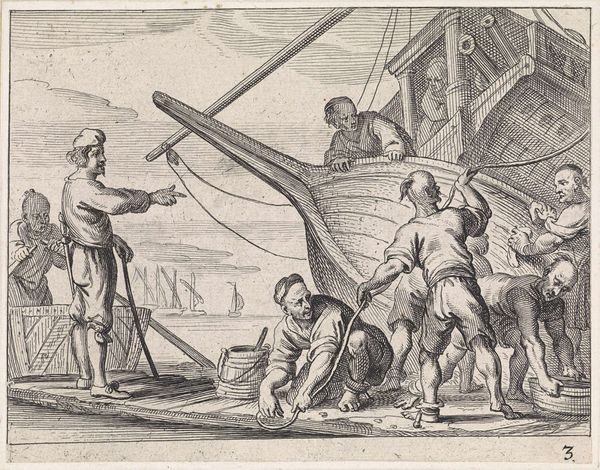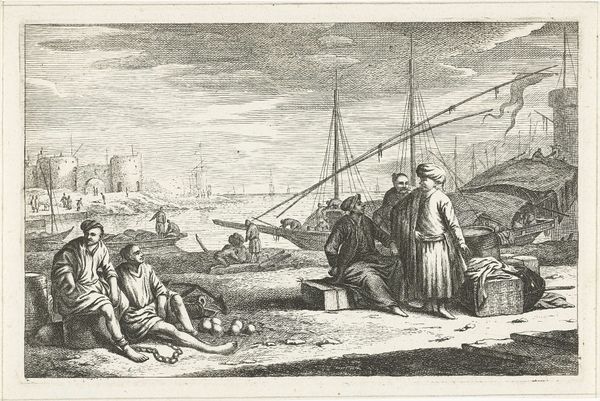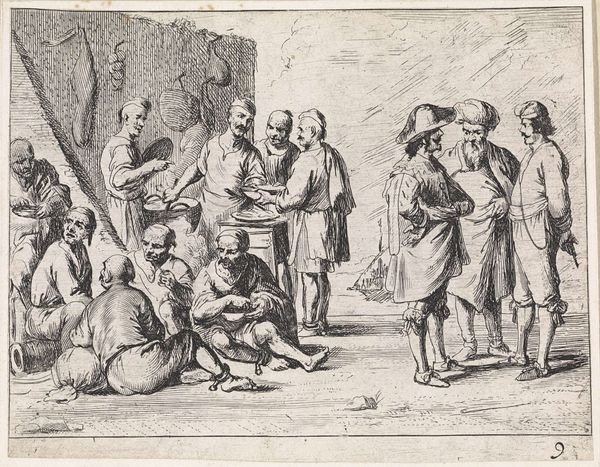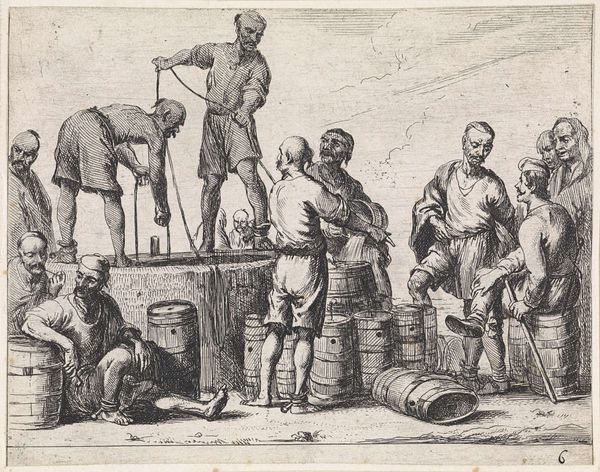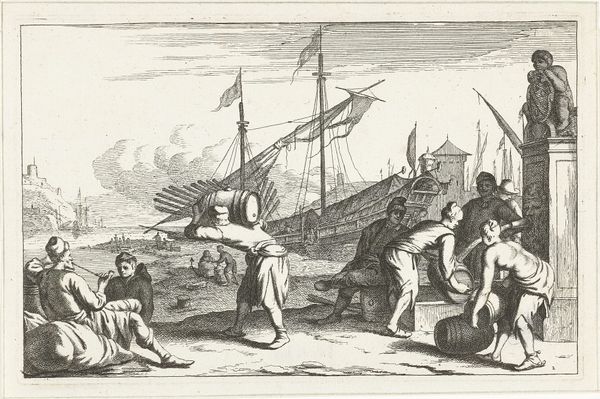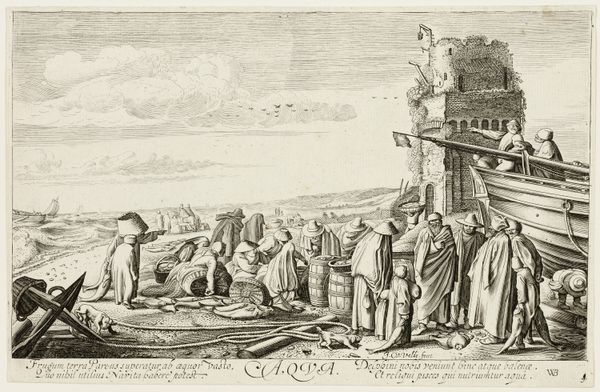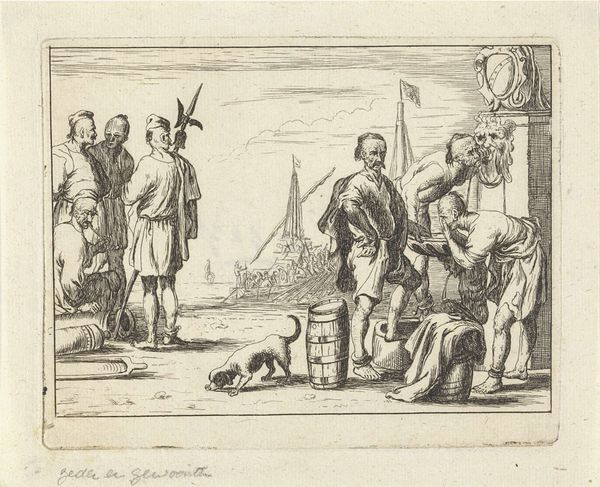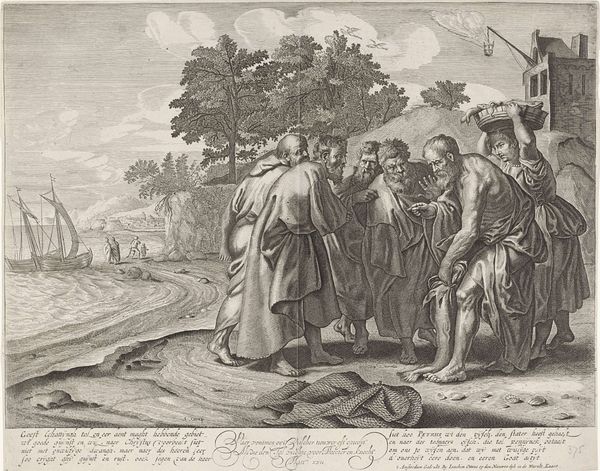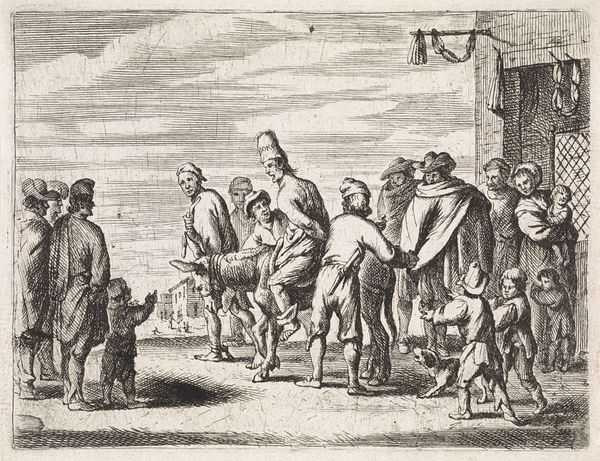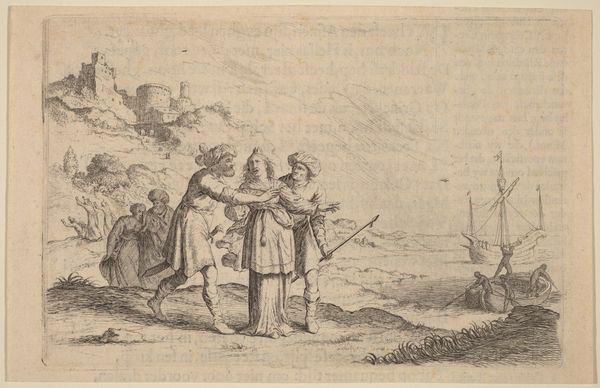
engraving
#
portrait
#
baroque
#
landscape
#
figuration
#
islamic-art
#
genre-painting
#
engraving
Dimensions: height 112 mm, width 143 mm
Copyright: Rijks Museum: Open Domain
Curator: Welcome. Here we have Cornelis de Wael's engraving from 1647, titled "Islamitische galeislaven en zeelieden op een kade," depicting Islamic galley slaves and sailors on a quay. What's your first impression? Editor: It evokes a somber mood, despite the busyness of the scene. The figures seem burdened, even defeated. I’m particularly struck by the symbolic weight of the ship looming in the background – is it a promise of escape or a reminder of captivity? Curator: Indeed, the interplay between labor and servitude is central here. Consider the engraving medium itself. Each line etched into the plate required labor. De Wael is not just showing us a scene, he is manifesting a network of manufacture and circulation involving resources, skilled craftsmen, trade, and power dynamics. Editor: The turbans immediately pull my focus. They aren't merely head coverings; they’re potent emblems of identity and otherness. This becomes particularly pointed given the context of slavery and seafaring, recurring visual motifs indicating cultural tension. Curator: Precisely. Think of the materials at play: the ink, paper, and the metal plate each hold a certain value reflecting consumption in seventeenth-century Europe. This consumption allows stories like these to travel beyond their original context. The social and economic implications here speak of broader patterns in trade and the circulation of people and goods. Editor: The subtle details are compelling—the weapons, the clothes, each seemingly mundane item hints at deeper historical narratives. The way that de Wael captures these figures tells of their interaction with broader colonial history. What I see reflected are the psychological experiences of those who find themselves as subjects. Curator: Right. These recurring themes indicate power and submission during a specific period in maritime commerce, a context that greatly informs the technique, doesn’t it? What did you think of the overall impact on you? Editor: Ultimately, this close look brings to light a meditation on humanity, subjugation, and cultural identity as visualized by De Wael. The visual vocabulary leaves us questioning. Curator: And hopefully appreciating the tangible remnants and lingering impacts. It makes one ponder labor and cultural expression in the era.
Comments
No comments
Be the first to comment and join the conversation on the ultimate creative platform.
